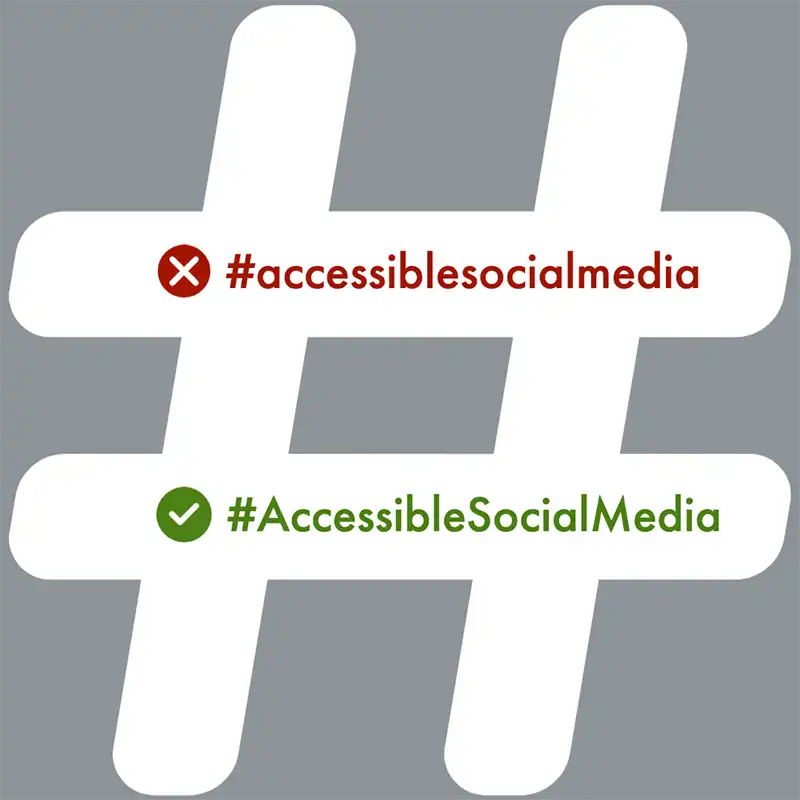
Are you looking to make your social media content accessible? We explore how to use hashtags effectively to improve social media accessibility.
What do hashtags have to do with social media accessibility?
In the UK there are almost 2 million people living with sight loss. Globally at least 2.2 billion people have a near or distance vision impairment, according to the World Health Organisation.
Screen readers are an important piece of equipment for those with impaired sight or sight loss. A screen reader recognises words on apps and websites. The screen reader then uses a synthesised ‘voice’ to read the text out aloud.
A hashtag is a metadata tag that is prefixed by a hash sign #. Hashtags can be tricky to interpret, because they often include more than one word. Because there are no spaces between the words in a hashtag, it is difficult for screen readers to recognise and read out the individual words contained within the hashtag.
So, if we continue to use hashtags with multiple lower case words within them, we can safely say that we are excluding audiences with visual impairments. This makes it difficult for people to engage fully with content on social media.
Why are hashtags important?
Hashtags play an important role on social media channels including LinkedIn, Twitter and Instagram. They are great for bringing a community together around a topic or an idea. They work by enabling user-generated tagging that helps audiences and brands to search on the topic or theme. This includes conversations, video and imagery. It’s important to use hashtags carefully and to avoid being ‘spammy’ by using too many. Also avoid including low value hashtags.
Read on to find out how you can improve hashtags in your social media content, and meet a wider range of needs for your audiences.
Adopting UpperCamelCase
You can make hashtags more accessible by capitalising the words which make up the hashtag, adopting the principles of ‘UpperCamelCase’ (otherwise known as ‘Pascal Case’). This means that all of the words contained within the hashtag begin with a capital letter.
Here’s an example:
#AccessibleSocialMedia
As opposed to #accessiblesocialmedia which is not translatable for screen readers.
Benefits for all
It’s not just people with impaired vision that can benefit from this treatment, anyone who struggles with patterns, including dyslexia are likely to benefit from this approach.
So build a little more time into executing your hashtag strategy. Help break down the barriers for people with visual impairments and make social media content more accessible for all.
You can read more about screen readers at AbilityNet, a pioneering UK charity who believe the power of digital technology should be available to everyone, regardless of ability or age.
You can also get help and advice about assistive technology at RNIB
If you need help with your Social Media Strategy, Say hello